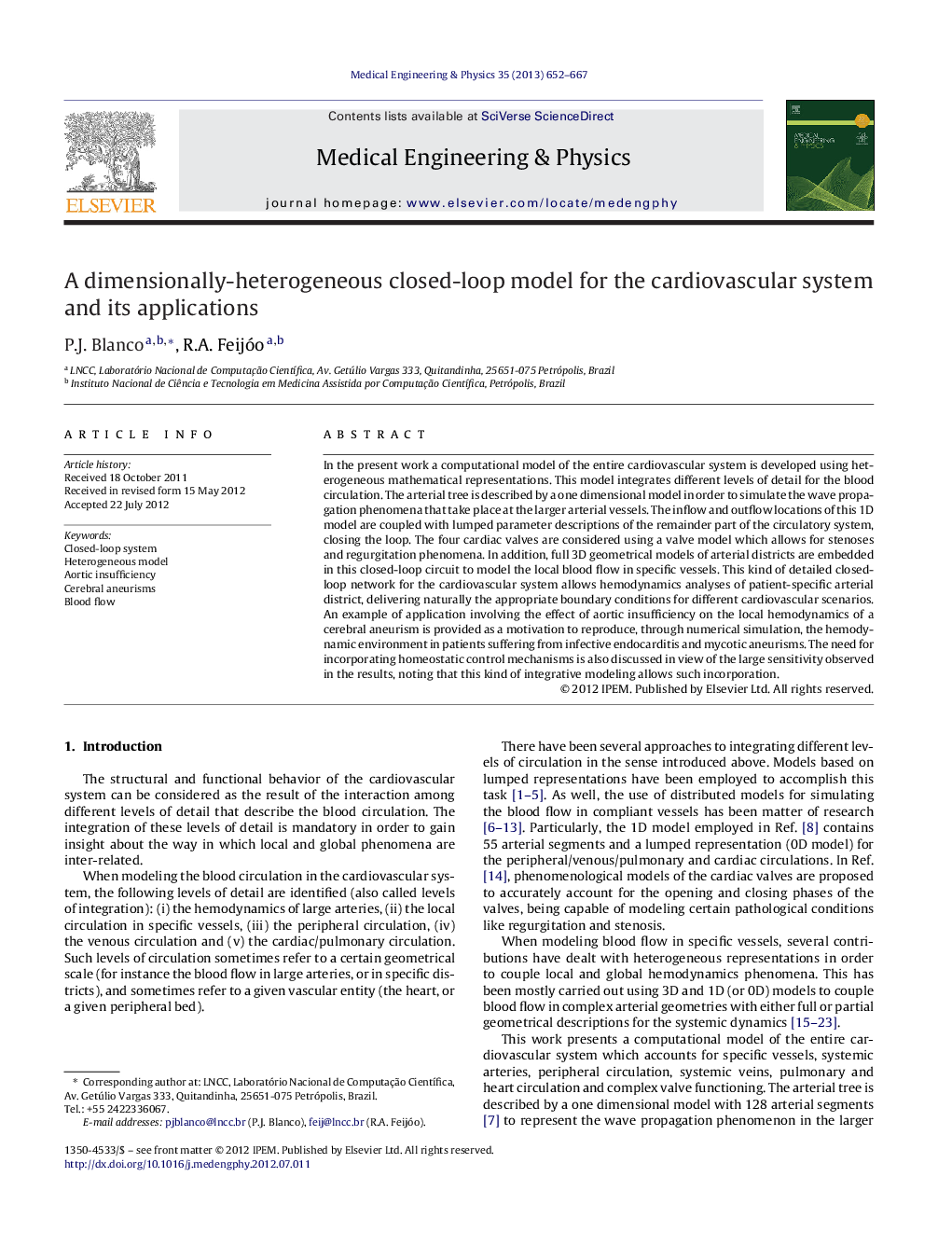| Article ID | Journal | Published Year | Pages | File Type |
|---|---|---|---|---|
| 876078 | Medical Engineering & Physics | 2013 | 16 Pages |
In the present work a computational model of the entire cardiovascular system is developed using heterogeneous mathematical representations. This model integrates different levels of detail for the blood circulation. The arterial tree is described by a one dimensional model in order to simulate the wave propagation phenomena that take place at the larger arterial vessels. The inflow and outflow locations of this 1D model are coupled with lumped parameter descriptions of the remainder part of the circulatory system, closing the loop. The four cardiac valves are considered using a valve model which allows for stenoses and regurgitation phenomena. In addition, full 3D geometrical models of arterial districts are embedded in this closed-loop circuit to model the local blood flow in specific vessels. This kind of detailed closed-loop network for the cardiovascular system allows hemodynamics analyses of patient-specific arterial district, delivering naturally the appropriate boundary conditions for different cardiovascular scenarios. An example of application involving the effect of aortic insufficiency on the local hemodynamics of a cerebral aneurism is provided as a motivation to reproduce, through numerical simulation, the hemodynamic environment in patients suffering from infective endocarditis and mycotic aneurisms. The need for incorporating homeostatic control mechanisms is also discussed in view of the large sensitivity observed in the results, noting that this kind of integrative modeling allows such incorporation.
